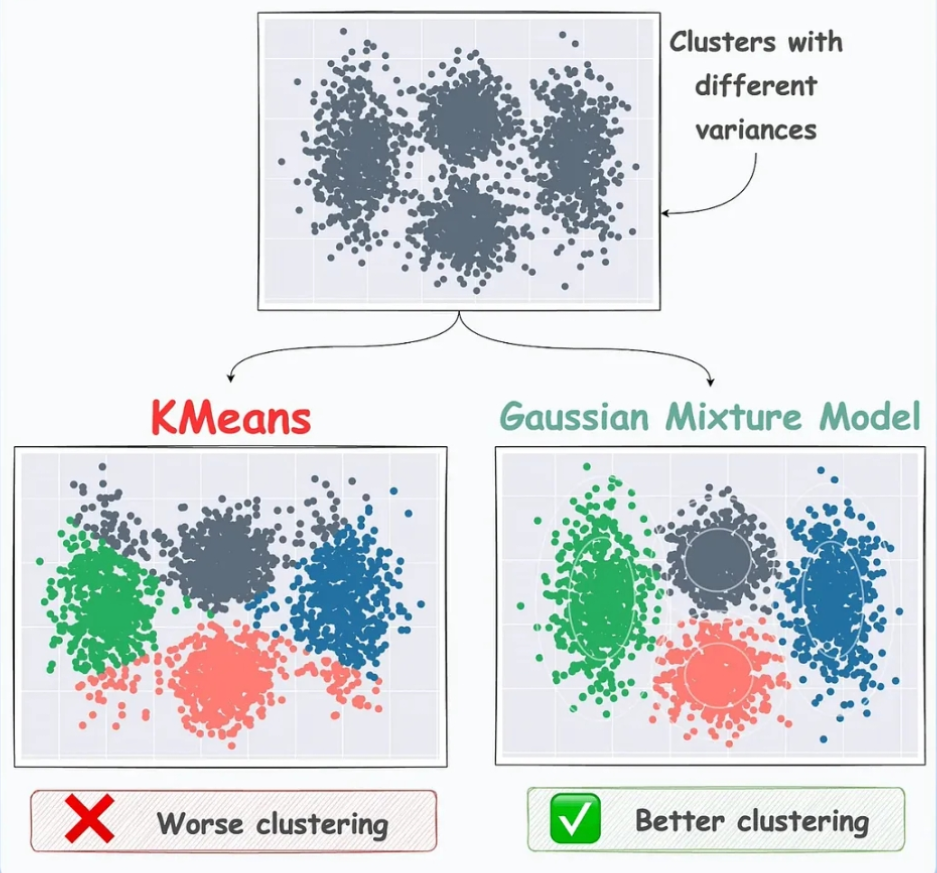Gaussian Mixture Models (GMMs) represent data as a mixture of multiple Gaussian distributions, with each cluster corresponding to a different Gaussian component. GMMs are more effective than K-means because they consider the distributions of the data rather than relying solely on distance metrics.
Soft Clustering technique.
In ML_Tools see: Gaussian_Mixture_Model_Implementation.py
GMMs can have difference Covariance Structures
Key Concepts
- Gaussian Components: Each Gaussian distribution is characterized by its mean and Covariance.
- Likelihood: The likelihood of a data point belonging to a cluster is given by the formula: where is the probability of data point given cluster , is the prior probability of cluster , and is the Gaussian distribution.
- Expectation-Maximization (EM) Algorithm: GMMs utilize the EM algorithm to iteratively optimize the parameters of the Gaussian components.
Advantages of GMMs
- Complex Data Distributions: GMMs can capture complex data distributions, unlike K-means, which only considers distance metrics.
- Probabilistic Framework: GMMs provide a probabilistic framework for clustering, allowing for soft assignments of data points to clusters.
- Modeling Elliptical Clusters: The use of covariance matrices enables GMMs to model elliptical clusters, enhancing clustering performance.
Applications
- Anomaly Detection: GMMs are widely used in various applications, including anomaly detection.
Important Considerations
- Covariance Types: The choice of covariance types (full, tied, diagonal, spherical) can significantly impact the performance of GMMs.
Follow-up Questions
- How do GMMs compare to other clustering algorithms in terms of scalability and computational efficiency?
- What are the implications of choosing different covariance types in GMMs?
